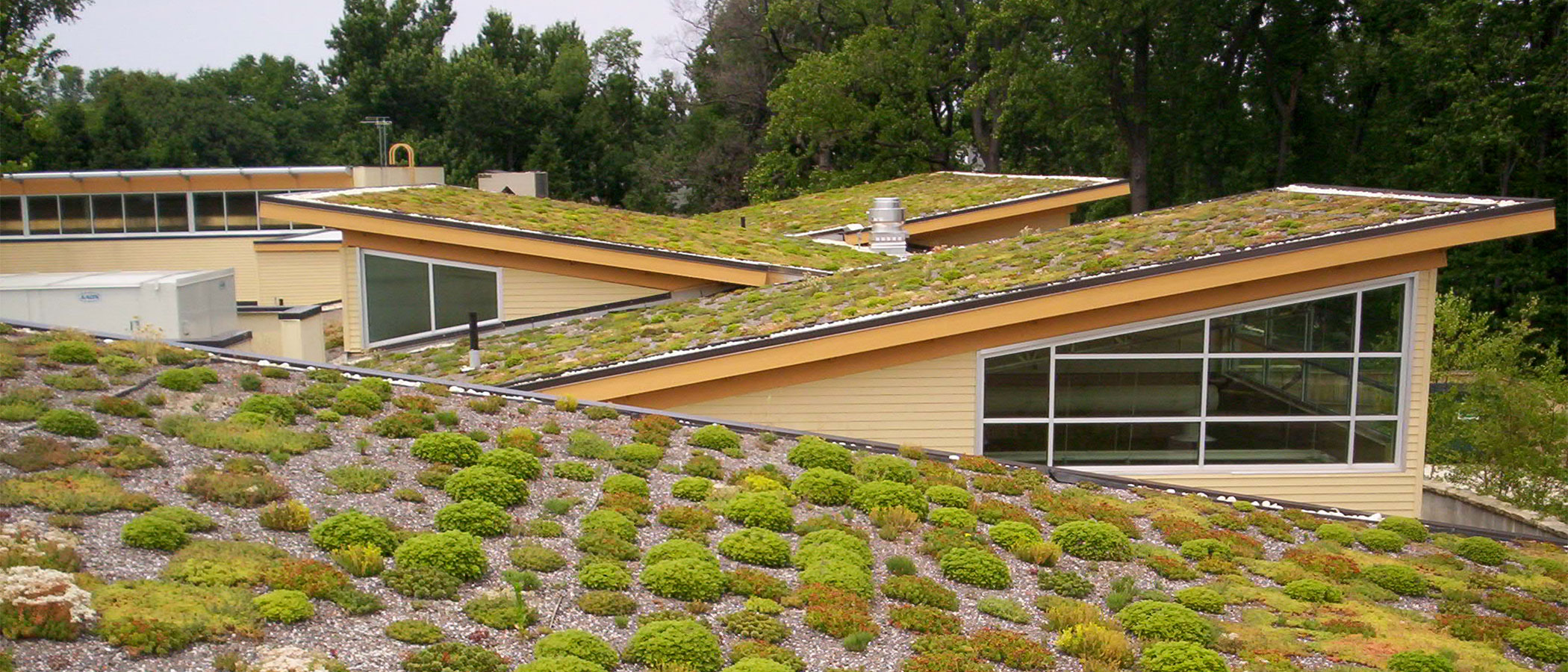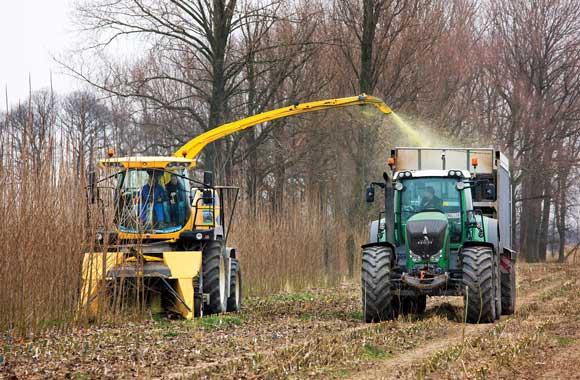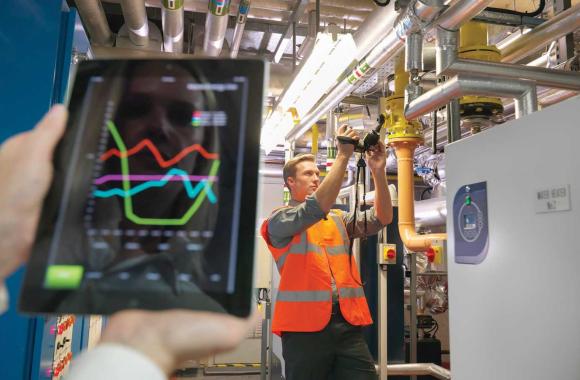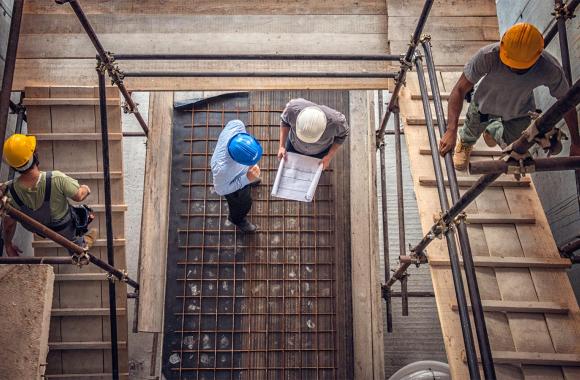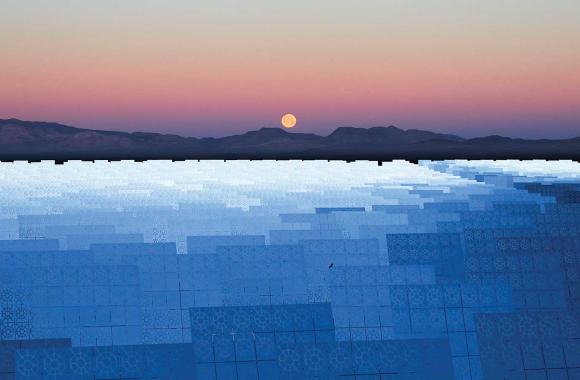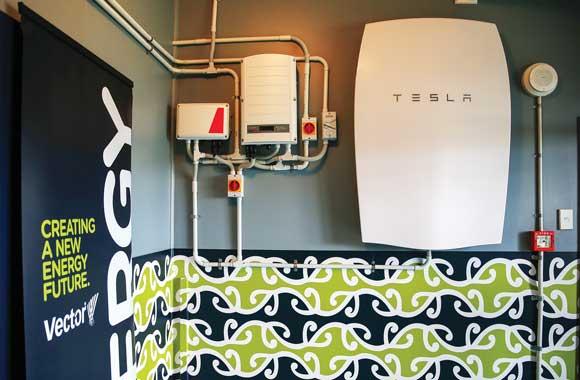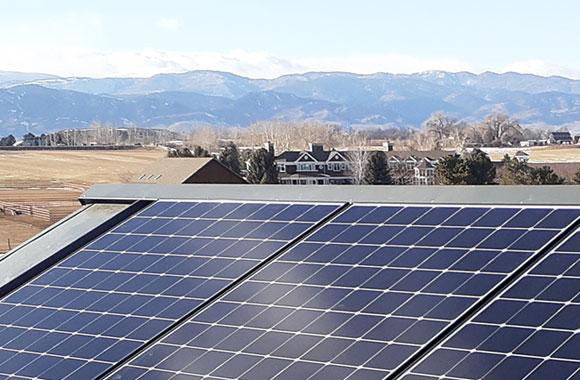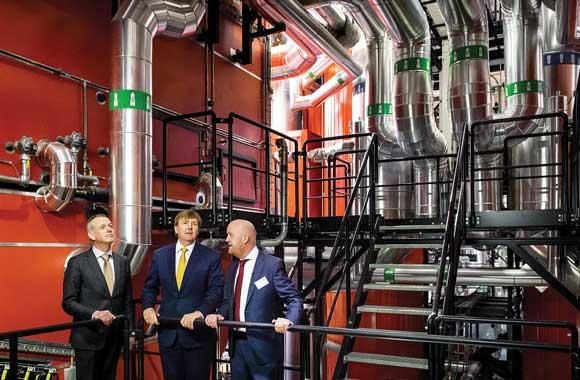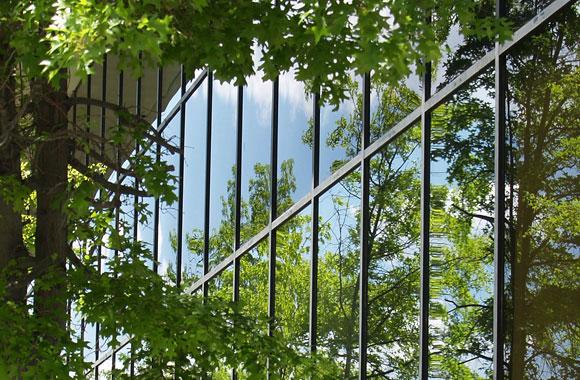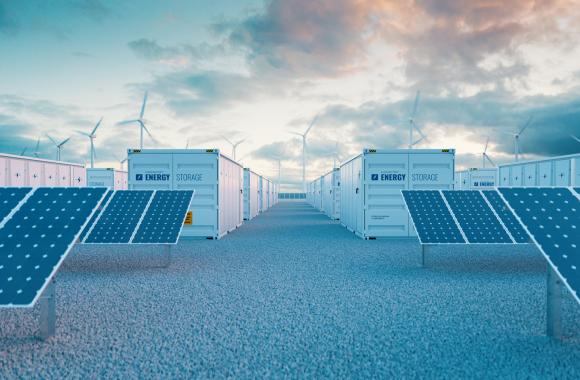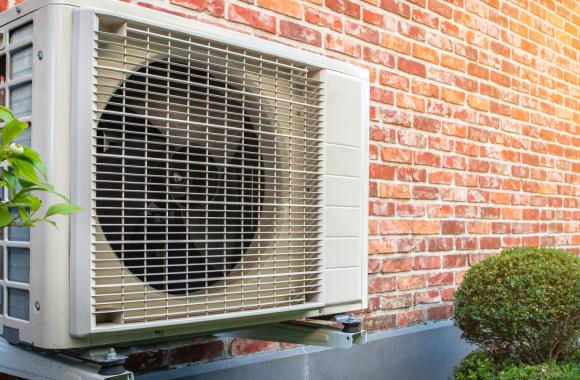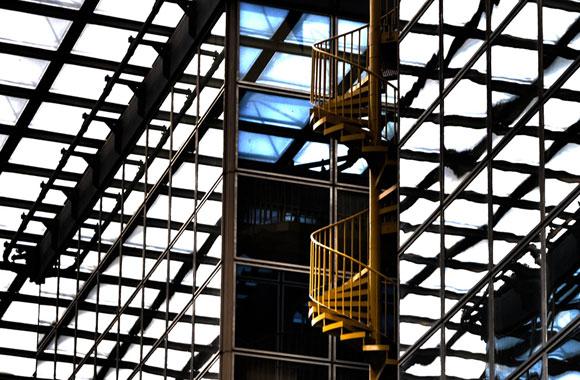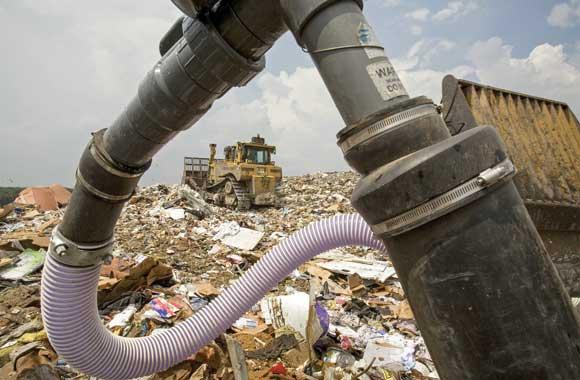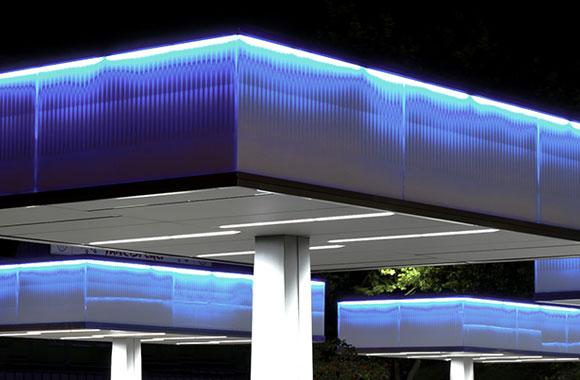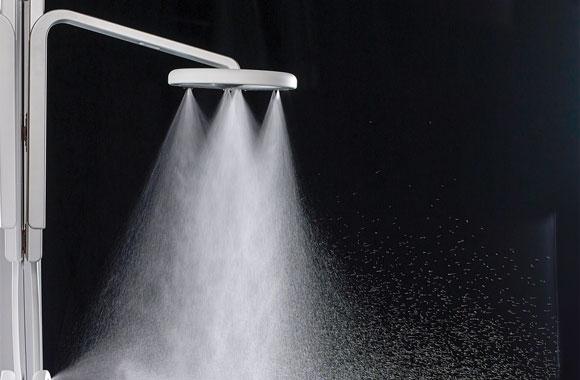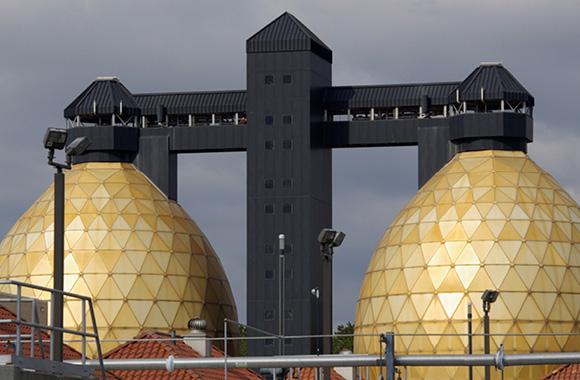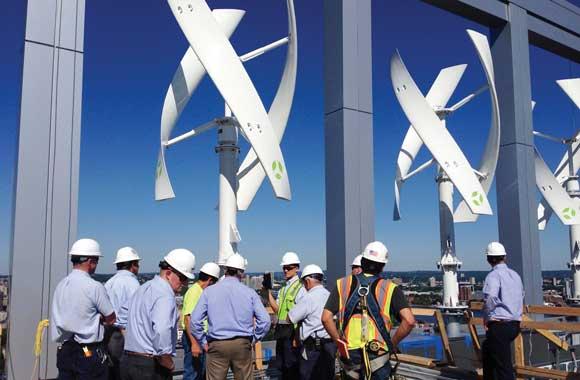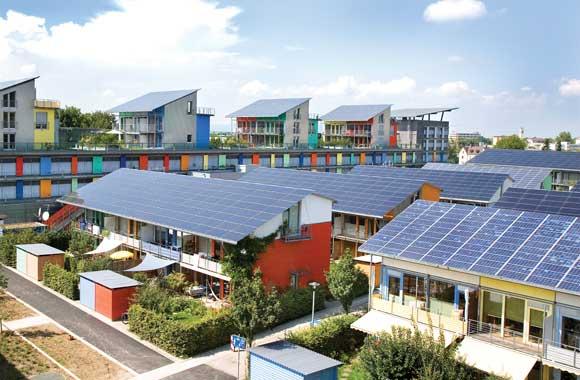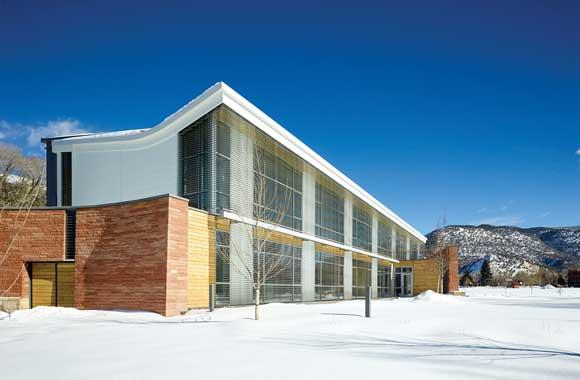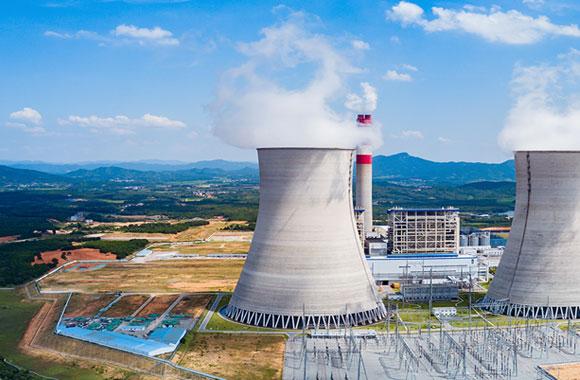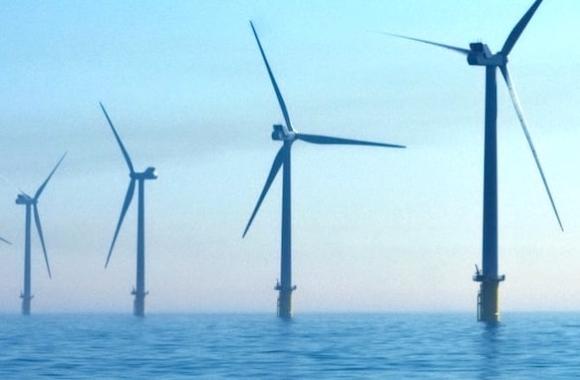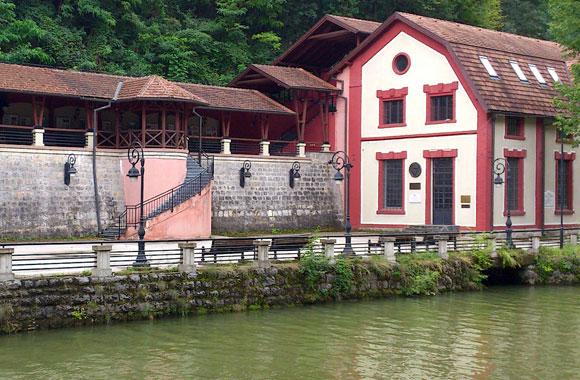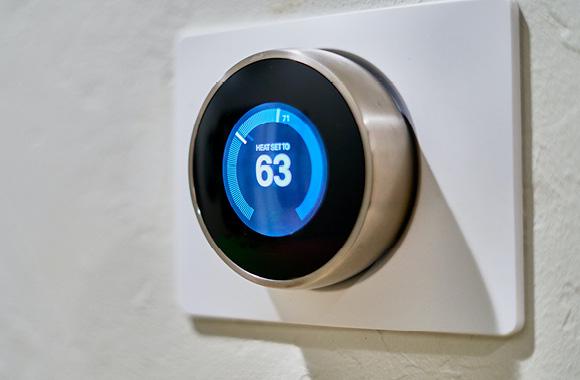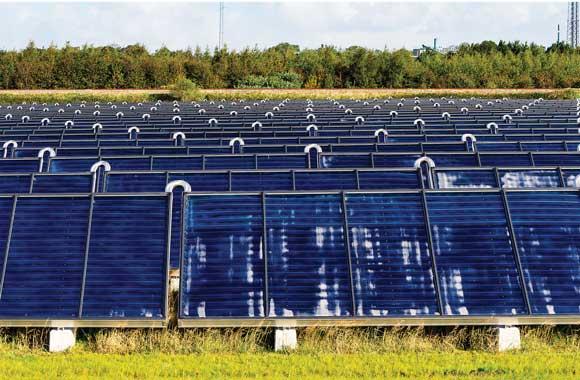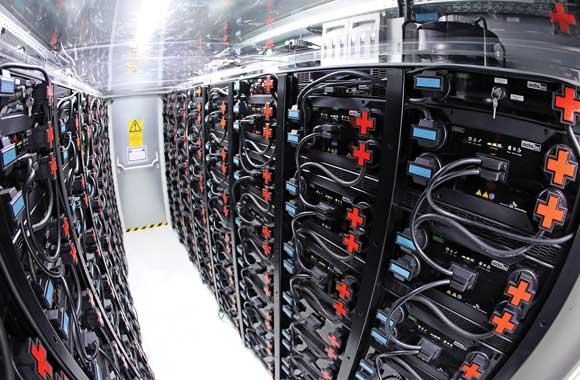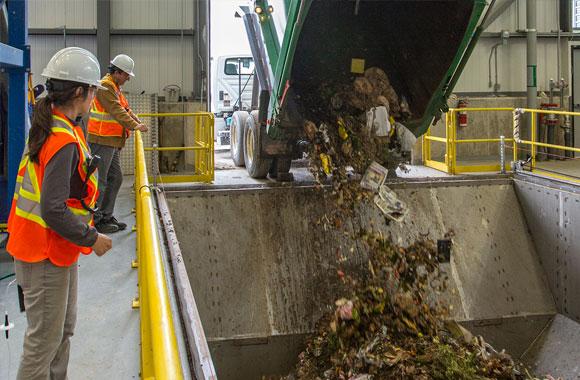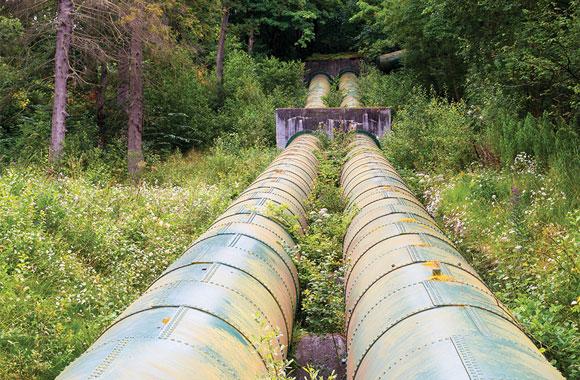Green and Cool Roofs
Green roofs use soil and vegetation as insulation. Cool roofs reflect sunlight. Both reduce building energy use for heating and/or cooling.
Reduced/Sequestered
2020–2050
To Implement
Operational Savings
Impact
In modeling cool roofs and green roofs, we account for climate-appropriate applications of each technology. If cool roofs expand from a current 5 percent of the relevant roof market at an 8–10 percent compound annual growth rate to 2050, and green roofs grow from a current 1 percent at 9–11 percent annually, 45–69 billion square meters of efficient roofing would be in place globally. Carbon dioxide emissions would be reduced by 0.53–0.99 gigatons at a net first cost of US$569.08–827.10 billion, with lifetime operating savings on heating, cooling, and maintenance of US$303.76–547.58 billion.
Introduction
Green roofs may support a simple carpet of hearty, self-sufficient ground cover such as sedum; or they may sustain full-fledged gardens, parks, or farms. The soil and vegetation insulate buildings. Green roofs also capture or slow water runoff.
Cool roofs reflect more incoming sunlight than traditional darker roofs do, which in turn reduces the heat of the roof surface and surrounding air and so the cooling load of a building. They also mitigate the overall urban heat island effect in cities.
By reducing overall energy load, both approaches mitigate greenhouse gas emissions. Construction incentives for green and cool roofs and building policies are key drivers of increased use.
Cool roofs are building roofs covered with light-reflecting materials or paints. Green roofs are building roofs with vegetation. This replaces the conventional practice of building dark-colored roofs not covered with vegetation.
Methodology
To model the adoption of cool roofs and green roofs, we created two models—one for green roofs and one for cool roofs—and combined the results.
Total Addressable Market
We based total addressable markets on Project Drawdown’s Integrated Buildings total addressable markets model, which calculates the total addressable markets of building floor area, roof area, space heating and cooling, and all other floor-area-driven total addressable markets used in the building sector. The estimated areas are also subdivided by building type (residential and commercial), and by building climate zone (guided by the ASHRAE 169 building climate zone standards). The global market for green roofs in 2018 was 17 billion square meters of roof area, growing to 45 billion by 2050. The global market for cool roofs in 2018 was 95 billion square meters of roof area, growing to 146 billion by 2050.
We estimated current adoption (the amount of functional demand supplied in 2018, with 2014 as the base year) at 1 percent for green roofs and 5 percent for cool roofs. We used these numbers to calculate the reference scenario for 2020 to 2050, assuming that any roof that is not a green or cool roof is a conventional asphalt shingle roof.
To forecast adoption of green roofs, we used a default sigmoid curve to grow adoption as a percentage of the market to the year 2050. We used percentage targets, justified by current adoption trend characteristics, current policy and incentive trends, and likely barriers to adoption (first cost and operating cost considerations). With adoption scenarios established, we applied key financial and climate variables to the roof area adopted to determine greenhouse gas mitigation potential and cost/savings results for cool roofs and green roofs.
Adoption Scenarios
We calculated the impacts of increased adoption of green roofs from 2020 to 2050 by comparing two growth scenarios with a reference scenario in which the market share was fixed at current levels
- Scenario 1: Adoption of cool roofs grows at a 7 percent equivalent rate annually following an s-curve to 30 percent adoption in 2050. Green roof adoption grows at a 9 percent equivalent rate annually following an s-curve to 9 percent adoption in 2050. Total adoption is 44.71 billion square meters of residential and commercial roof space (26 percent of the total addressable market).
- Scenario 2: Adoption of cool roofs grows at a 9 percent equivalent rate annually following an s-curve to a 48 percent adoption in 2050. Green roofs grow at an 11 percent equivalent rate annually following an s-curve to 13 percent adoption in 2050. Total adoption is 69.06 billion square meters of residential and commercial roof space (40 percent of the total addressable market).
Emissions Model
Emissions included in this analysis are electricity and fuel for cooling and heating (including a heating penalty for cool roofs). We used data from a range of peer-reviewed literature sources, most of which we weighted by climate zone. We obtained emissions factors from Intergovernmental Panel on Climate Change (IPCC) guidelines.
Financial Model
We used multiple sources of first cost and full operating cost (maintenance of the roof, and the energy load costs of the building associated with the roof type) data to construct conventional operating cost. We applied the reduction data to that value. Green roofs make managing stormwater easier and cheaper, so we included stormwater-related costs in this model.
Integration
To integrate these solutions with others in the Buildings sector, we first prioritized all solutions according to the point of impact on building energy usage. Building envelope solutions such as Insulation were first, building systems like Building Automation Systems were second, and building applications like High-Efficiency Heat Pumps were last. Thus, the cool roofs and green roofs energy saving potential was reduced to represent the prior energy savings of the higher-priority solution: Insulation.
Results
All monetary values are presented in 2014 US$.
We found a potential for 0.53 gigatons of carbon dioxide equivalent greenhouse gas reductions in Scenario 1 over 2020–2050 with a net first cost to implement of US$569.08 billion and lifetime net operational savings of US$303.76 billion.
For Scenario 2, the emissions avoided amount to 0.99 gigatons; the lifetime net operational savings, US$547.58 billion; and the net first cost to implement, US$827.10 billion. Most of this cost (US$700 billion) comes from the green roof solution, yet most of the emissions reduction and operational savings (1 gigaton and US$670 billion, respectively) come from the cool roofs solution.
Discussion
Green roofs show promise to significantly impact emissions in certain climates, but the likely driver of adoption will be policies capitalizing on their ability to retain urban stormwater retention and support wildlife habitats. We have mostly included costs for green roofs with less than 15 centimeters of soil cover and only grasses; intensive green roofs are far more expensive because they require even stronger roofs to support more soil, more captured water, and larger plants. The additional aesthetic and social benefits could be significant in cities.
Cool roofs are an excellent tool for mitigating the localized urban heat island effect and saving energy. Approaches such as installing special roof tiles and paints could offer a low-cost way to reduce building temperatures in some hot regions. However, there can be a net negative effect: Cooling in the warmer seasons is good, but cooling in the cooler seasons is not, and cool roofs are unchangeable across seasons in temperate regions.
Many researchers have modeled and/or reported on the potential impact on global temperatures of increased albedo due to cool roofs. Some of these models show significant global cooling. However, other studies, including Irvine, Ridgwell, and Lunt (2011); Jacobson and Ten Hoeve (2012); and Levinson et al. (2018) assert that cool roofs that increase urban surface albedo are limited in their potential to reduce global warming. The significant difference in results has prompted at least two papers (Menon et. al., 2011, and Levinson et al., 2018) that assess the methodologies involved and discuss the different approaches, assumptions, and limitations. Differences in models and how they account for oceans, aerosols, moisture balance, cloud formation, and spatial resolution account for the controversy.
We have taken a conservative approach and discounted potential global cooling due to increased urban albedo for Scenario 2. Researchers agree that cool roofs reduce overall building energy use, which is the mitigation effect modeled in Scenario 2.
References
Irvine, P. J., Ridgwell, A., and Lunt, D. J. (2011). Climatic Effects of surface albedo geoengineering. Journal of Geophysical Research, 116, D24112. URL: Link to source: https://agupubs.onlinelibrary.wiley.com/doi/pdf/10.1029/2011JD016281
Jacobson, M. Z., & Ten Hoeve, J. E. (2012). Effects of Urban Surfaces and White Roofs on Global and Regional Climate. Journal of Climate, 25(3), 1028–1044. Link to source: https://doi.org/10.1175/JCLI-D-11-00032.1
Levinson, R., Rosado, P., Chen, S., Destaillats, H., Gilbert, H., Ban-Weiss, G., Zhang, J., Kleissl, J., and Pizzicotti, M. (2018). Appendix P: Cool wall application guidelines (Task 6.1 report). California Energy Commission. URL: Link to source: https://heatisland.lbl.gov/sites/default/files/Appendix%20P_CW%20task%206.1%20report_LBNL_Guidelines_v046_FINAL_auto%20rotated.pdf
Menon, S., Levinson, R., Fischer, M., Millstein, D., Brown, N., Salamanca, S., Sednev, I., and Rosenfeld, A. (2011). Cool roofs and global cooling: a response to Jacobson & Ten Hoeve. Heat Island Group, Lawrence Berkeley National Laboratory. Link to source: https://eta-publications.lbl.gov/sites/default/files/LBNL%20Heat%20Island%20Group%20response%20to%20Jacobson%20and%20Ten%20Hoeve%20%282011%29%2C%20November%204%202011.pdf
What You Can Do
Start a roof-painting or roof-planting initiative in your community.
If you own or manage warehouses or other large-footprint buildings, look into painting or planting your roof as a way to contribute to your ESG efforts.
- Expand your knowledge by exploring another Drawdown solution.
Co-benefits
Green and cool roofs alleviate the urban heat island effect and reduce the risk of heat related illnesses.
By creating pleasant green spaces, they also can promote mental well-being, reduce stress, create a connection with nature, leading to a healthier and happier living environment.

